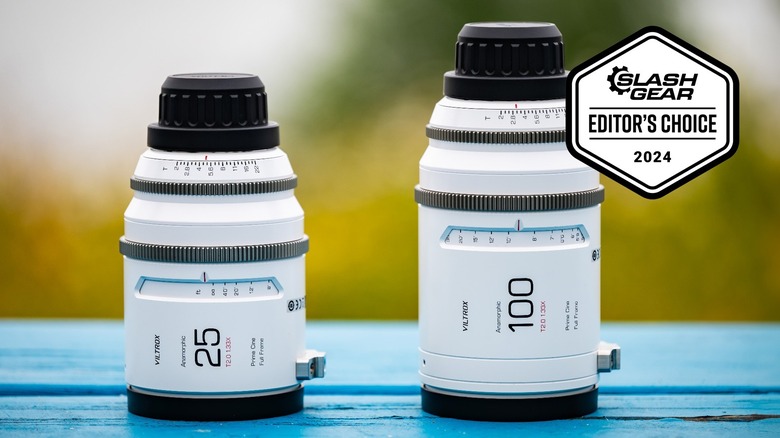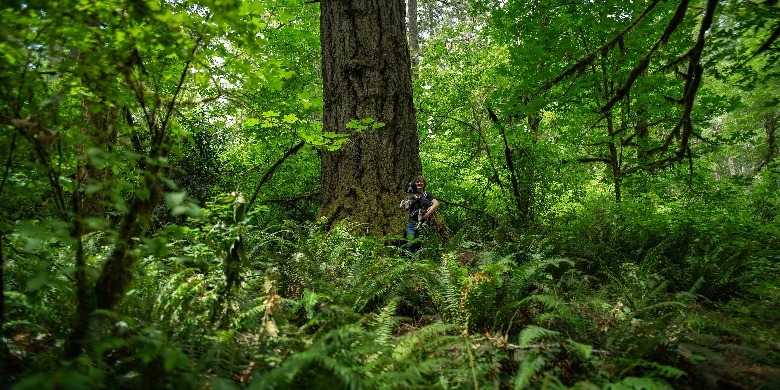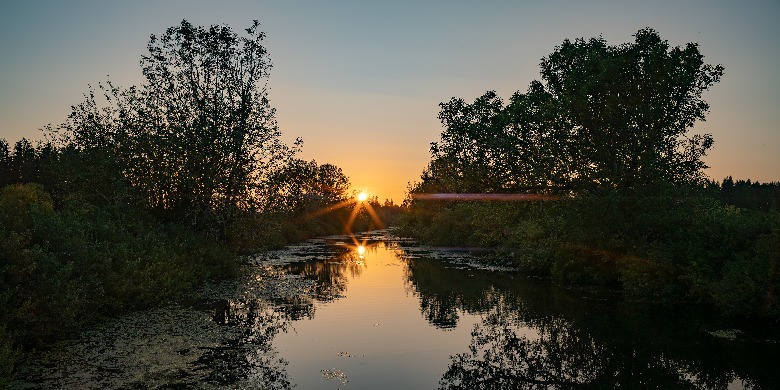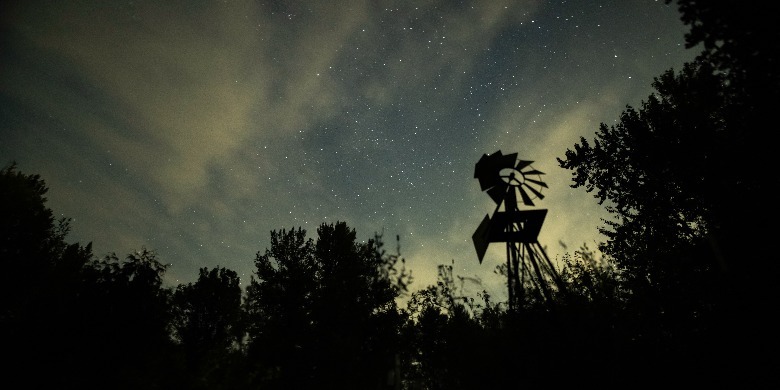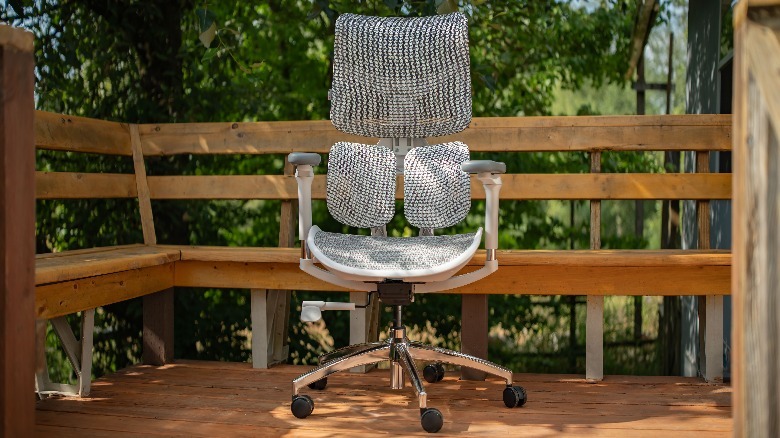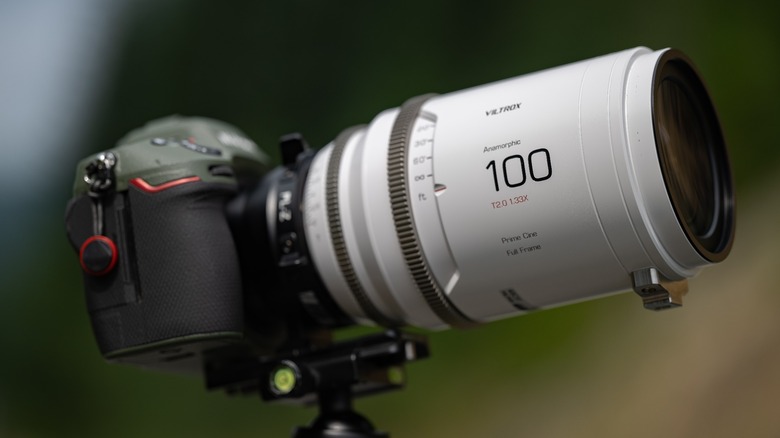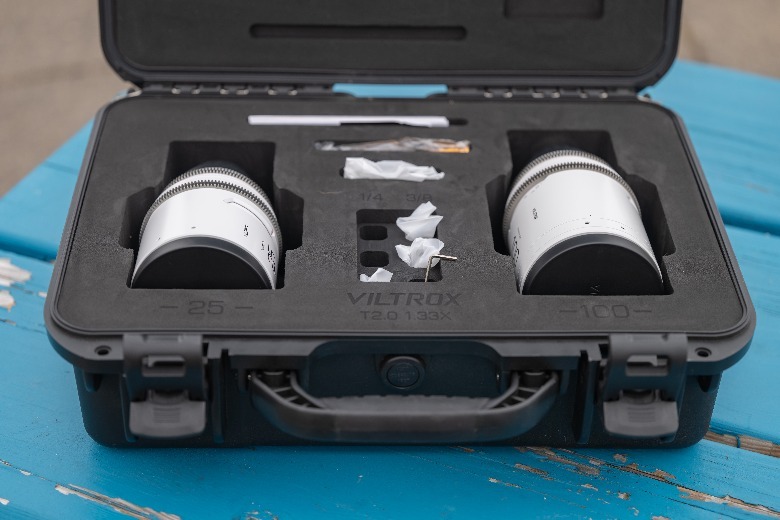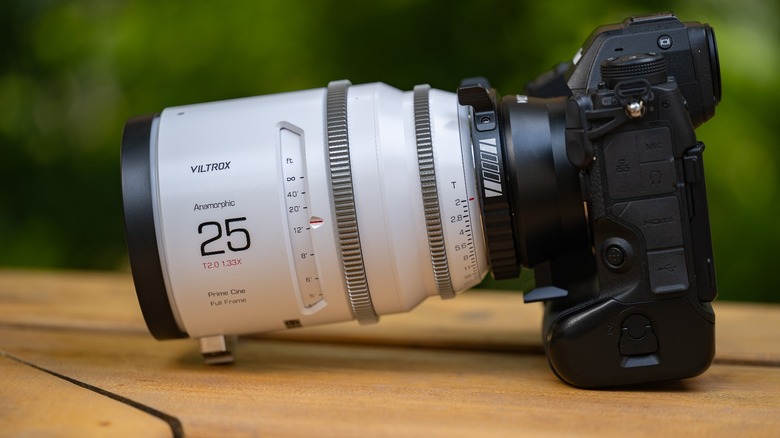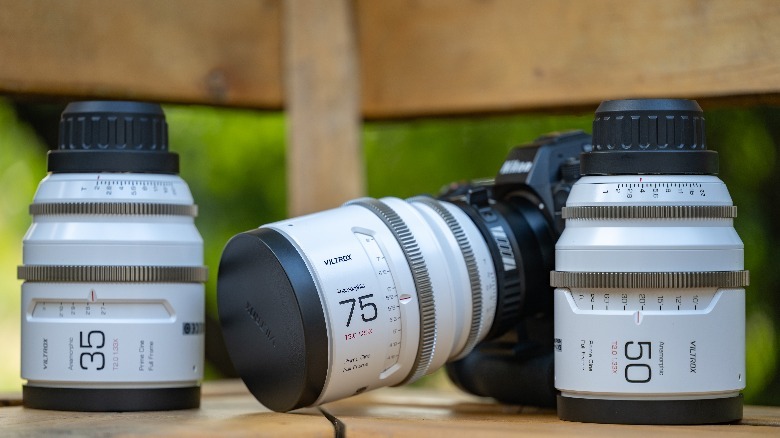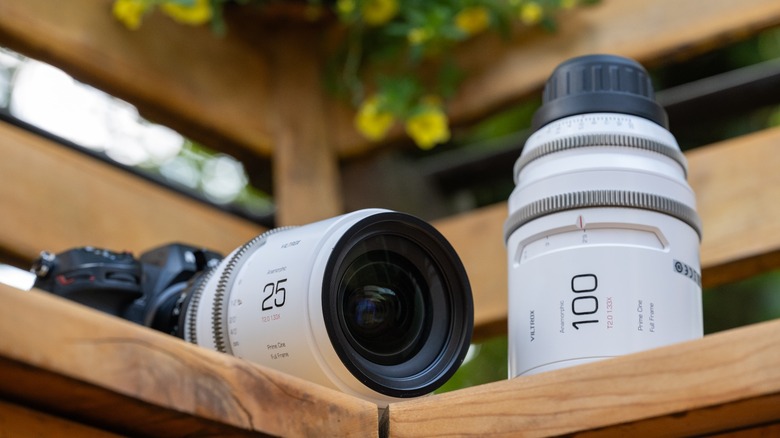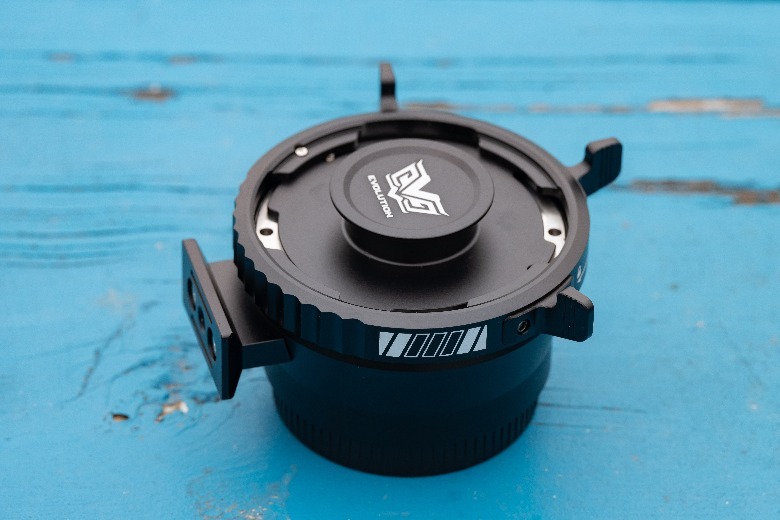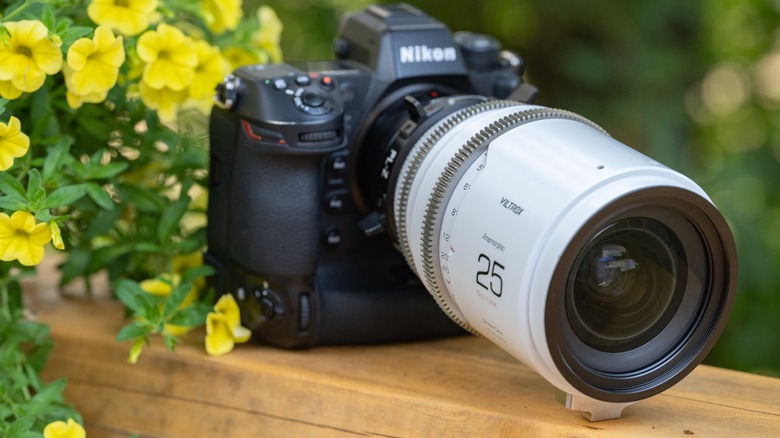Viltrox EPIC Anamorphic 25mm/100mm T2.0 1.33X Cine Lens Kit Review: Big, Heavy, Expensive, Fantastic
- Professional grade optical quality
- Gears match between Viltrox EPIC lenses
- Robust design and white color scheme looks and feels amazing
- Surprisingly good for capturing still images
- Beautiful cinematic bokeh and horizontal flares
- Large
- Heavy
- Expensive
Most people are familiar with typical cameras and lenses, and the 4:3 aspect ratio images and 16:9 video they produce. However, when you step into the world of filmmaking, things start to get more interesting with the wider aspect ratios delivered by anamorphic lenses such as the Viltrox EPIC Anamorphic 25mm and 100mm T2.0 1.33X cinema lens kit.
If you want that distinctive look which makes professionally filmed movies look so much more cinematic than what's most often filmed with consumer lenses from Nikon, Sony, Canon and the like, then you need an anamorphic lens. Essentially, an anamorphic lens captures an area much wider than a standard lens. Straight out of camera, your video will look strangely squashed, and must be "de-squeezed" in post processing by multiplying the horizontal measurement of the image by the squeeze factor of the lens, which in the case of Viltrox EPIC lenses is 1.33X. This results in not just a wider image, but also unique effects such as dramatic horizontal lens flares and eye-catching bokeh patterns.
The Viltrox EPIC Anamorphic 25mm/100mm T2.0 1.33X Cine Lens kit is certainly an exciting creative tool on paper, but are these lenses right for you? Viltrox provided both the 25mm/100mm kit, as well as the 35mm/50mm/75mm kit and a PL-Z mount adapter for this review. I tested the lenses on the Nikon Z8 and Z9.
Delivers gorgeous, cinematic footage
When you're buying big, heavy glass, you expect it to do something spectacular, and that certainly is the case for these lenses. Footage captured with the Viltrox EPIC 25mm/100mm is sharp where it needs to be and gloriously smooth elsewhere when shot at the bright T2.0 rating. A T-stop is a measure of light transmission to the sensor, whereas F-stop is based on the diameter of the aperture. Basically, F-stop tells you more accurately the depth of field the lens will deliver, whereas T-stop tells you precisely how bright the lens is. The upshot, though, is that the 25mm and 100mm lenses capture a ton of light and also deliver gorgeous bokeh with that distinctive look inherent to 1.33X anamorphic lenses, including that highly desirable horizontal lens flare.
I did notice some color fringing when pixel peeping on high resolution still images captured with the 25mm T2.0, but it's very minor and was only visible in a small number of my images. Also, when shot wide open, the lens exhibits significant vignetting in corners of the full image captured by a full frame 4:3 format sensor. However, when filming in 16:9 aspect ratio and de-squeezing to 21:9, the vignetting doesn't affect the video footage. I did not notice these issues with the 100mm T2.0, which seems to be much cleaner overall in its image quality than the 25mm T2.0.
Surprisingly great for landscape photography
While these lenses are obviously intended for video, I found them to be surprisingly excellent for the purpose of landscape photography. The necessary de-squeezing of an image captured using an anamorphic lens means that if you're shooting a still photo rather than a video clip, what you essentially get is an in-camera panorama. Thanks to this, I was able to capture some extremely attractive 5.32 x 3 aspect ratio photos that have me genuinely considering picking up an anamorphic lens for the express purpose of panoramic photography.
I very much enjoy shooting panoramas, and have been capturing them since very early in my days as a photographer. However, up till now I'd always just assumed that it was necessary to stitch multiple images together, crop the top and bottom of a single image, or invest in a pricey used panoramic film camera such as the Fuji gx617. The Viltrox 25mm and 100mm T2.0 1.33X lenses taught me that there's another option, one that delivers eye-catching character. I was excited by the new composition opportunities these lenses presented to me.
Also, there's some merit, particularly in the Viltrox EPIC 100mm lens, for product photography, especially if your client desires wide aspect ratio images. I found this out myself on an assignment where I needed a wide aspect ratio image of an office chair (the Sihoo Doro S100), and the Viltrox EPIC 100mm provided exactly the results I was looking for. I probably wouldn't recommend these lenses specifically for product photography, or indeed for stills photography as a primary purpose, but I ended up using them far more than I ever anticipated for capturing still images.
Built like tanks, and just as heavy
Given their bright T-stop and high degree of performance, it should come as no surprise that the Viltrox EPIC 100mm/25mm are big, hefty lenses which will certainly give you a workout. This is in part due to the extremely robust design of these lenses, which pack a ton of glass into extremely robust solid metal lens barrels. Whereas normally it would seem cliche and an exaggeration to call a lens "tank-like," here it is a far more literal description. While I still handled such expensive tools with extreme care, the outer housing of these lenses feel like they could deflect a bullet.
The white color scheme also looks amazing from an aesthetic standpoint, and there's no mistaking them as professional products. Both transmission and focus dials turn smoothly and silently with pinpoint precision. While I'm far from a wizard with manual focus, and I didn't have a working auto or manual follow focus system on hand to use with the lens, I nonetheless found it remarkably easy to acquire and maintain focus with these lenses than with most other manual focus systems I've ever used. The geared focus and transmission rings are matched both between these two lenses, and with the Viltrox EPIC 35mm/50mm/75mm T2.0 1.33X lens kit, so that you don't have to readjust your follow focus system when swapping between any of these five lenses.
The lens kit comes in a robust, impact resistant case, and includes a number of minor tools and accessories.
Which cameras work best with these lenses?
I had hoped to test the Viltrox EPIC 25mm/100mm on a native PL mount cinema camera which I intend to review in the future, but unfortunately that was delayed and I had to settle for adapting the lenses to Nikon Z mount via Vitrox's PL-Z adapter so that I could shoot with them on my Nikon Z8 and Z9 cameras. While this barebones and somewhat unorthodox cinematography kit did limit me in some regards, I found that these lenses work perfectly well when paired with modern mirrorless hybrid photo/video cameras such as the Z8 and Z9. While it felt a little sketchy using such large and heavy lenses on the Z mount, I never had any actual trouble with this setup despite shooting in some fairly rough circumstances.
Of course, a native PL mount would make for a preferable experience, as I always prefer shooting with native glass. The Viltrox EPIC 25mm/100mm would be an amazing pair of lenses to shoot on the Blackmagic Ursa Cine camera. If you don't have access to such a high end cinema camera, the lenses are still absolutely worth using via an adapter.
An an alternative (or complimentary) lens kit
I also had the opportunity to test out Viltrox's 35mm, 50mm, and 75mm lens kit, which offer the same T2.0 maximum T-stop and anamorphic squeeze ratio as the 25mm/100mm. 35mm/50mm/75mm offers a much more standard collection of focal ranges compared to 25mm and 100mm. However, personally I found myself gravitating to the 25mm and 100mm during testing.
I shot extensively on both sets of lenses, and I can attest that they all share the same character of image rendering, with the footage matching nicely regardless of which lens I happened to be using. All feature a shared center of gravity, and gear position, meaning that if you do decide you need all of them (and have the rather enormous necessary budget) that they work very well indeed together. Interestingly, the 35mm, 50mm, and 75mm lenses are available in native E and L mounts, whereas the 25mm and 100mm are currently only available in PL mount.
The L-mount versions of the 35mm/50mm/75mm would be particularly great to use on the Blackmagic Cinema Camera 6K. With only one of these lenses you'd have a highly capable, yet still relatively affordable rig able to deliver footage which wouldn't look out of place in a movie theater.
Expensive, but for many they're well worth the cost
Together, the Viltrox EPIC Anamorphic 25mm/100mm T2.0 1.33X Cine lens kit will set you back a whopping $7,759. Alternatively, each lens costs $3,999 on its own. That means if you're buying the kit you get a slight discount compared to buying the lenses individually. The 35mm, 50mm, and 75mm are somewhat more affordable at $3,299 each, or $9,600 for the three lens kit. Interestingly, E and L mount versions of 35mm, 50mm, and 75mm are $100 less than the PL version, or $200 less for the three lens kit.
If you want to adapt the lenses from PL mount to some other camera mount system, you'll need the Viltrox ZMOVE Series PL Cine Lens Mount Adapter, which costs $178 and allows them to be used on L/E/Z/X/GFX/M43/R mount cameras.
Regardless of which lens or kit you choose, there's no getting away from the fact that this is expensive, high-end gear. However, there's no denying the amazing results these lenses produce. Considering the footage I've captured using them, they're absolutely worth the price.
Conclusion
It's hard to define why real, professional Cinema lenses are special and worth shooting with until you've actually used them yourself. Seeing what the Viltrox EPIC Anamorphic 25mm/100mm T2.0 1.33X Cine Lenses can do made me excited to go out and film or photograph scenes which to me are somewhat mundane. Keep in mind that these are very heavy, highly specialized, and quite expensive lenses, but all you have to do is take a look at the video they produce to be deeply tempted to add them to your kit.
While these lenses are certainly aimed at more serious filmmakers with a decent budget, they are nonetheless a method by which to instantly upgrade the production value of your video footage, regardless of what you happen to be filming.
The Viltrox EPIC Anamorphic 25mm/100mm T2.0 1.33X Cine Lens kit, as well as the individual lenses, the 35mm/50mm/75mm and the Viltrox ZMOVE Series PL Cine Lens Mount Adapter are available for purchase from Viltrox's own website, as well as from other online retailers.
